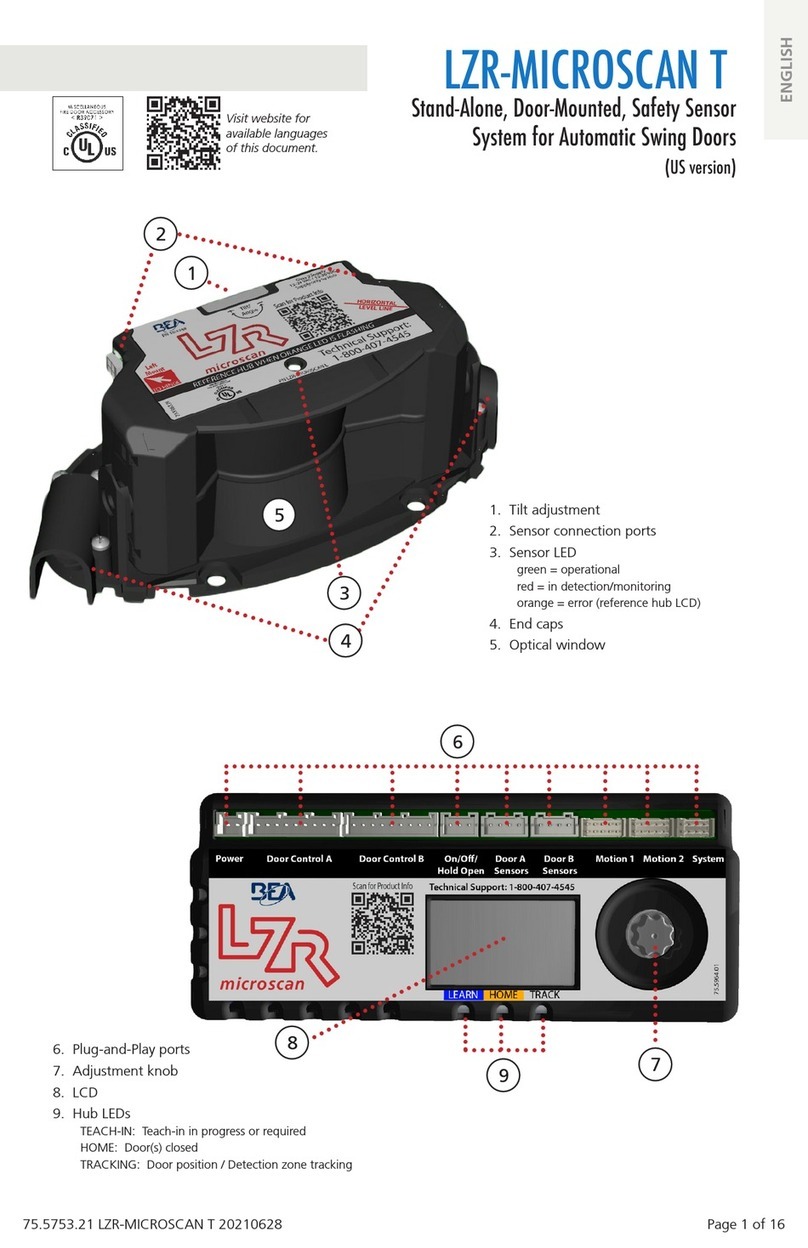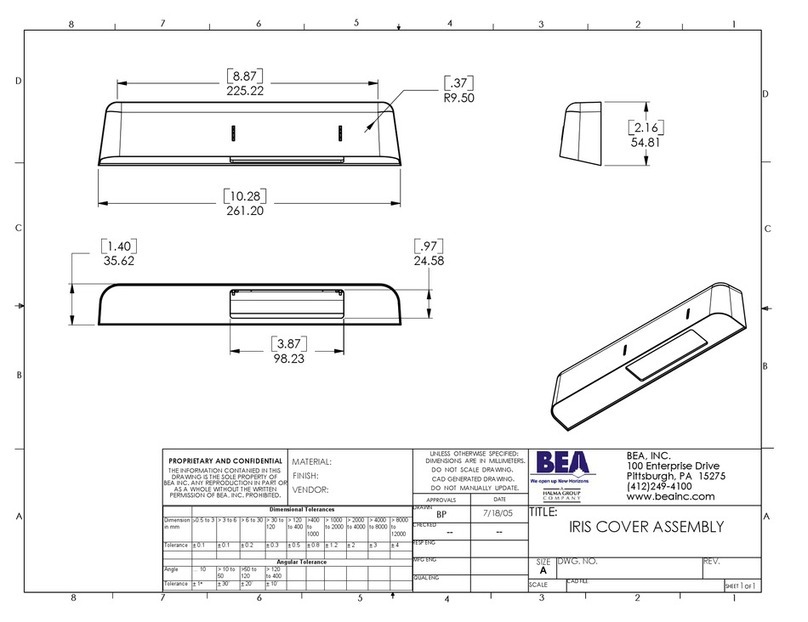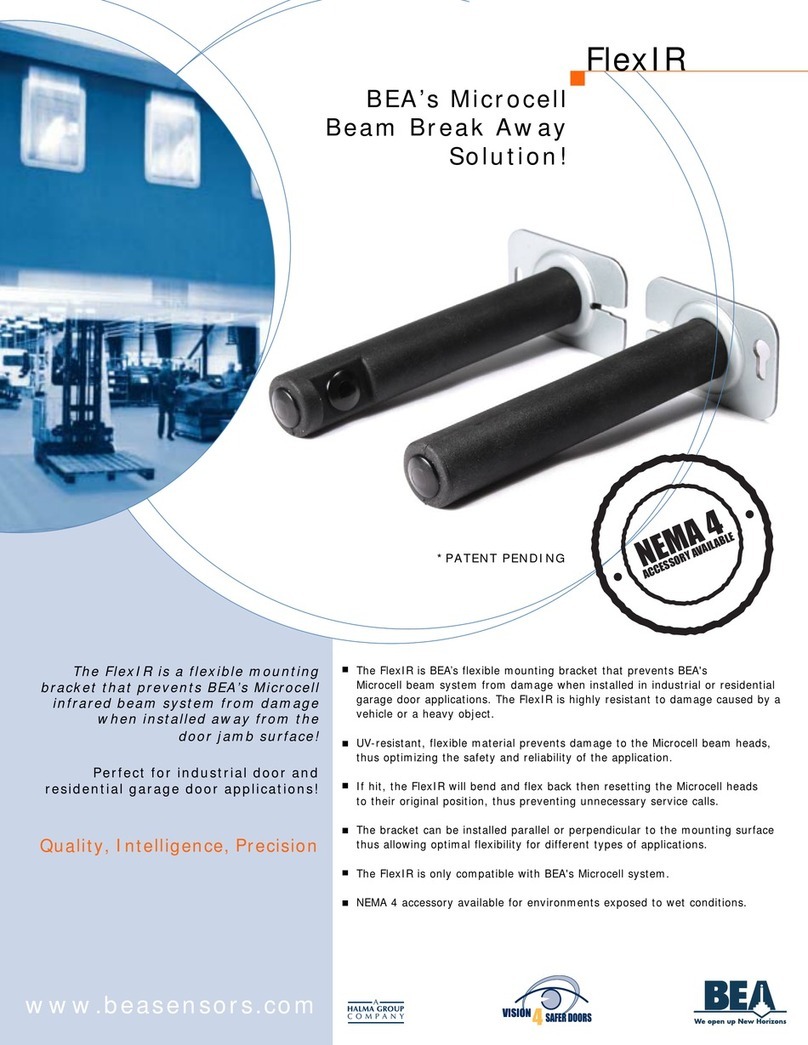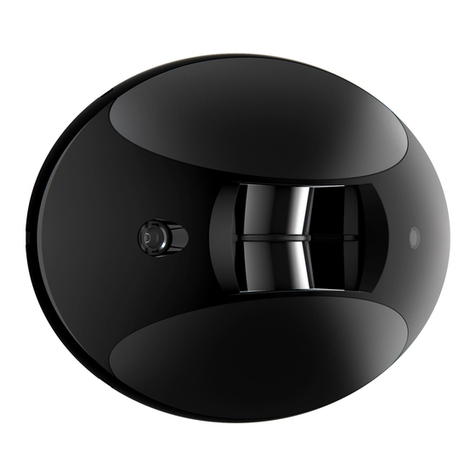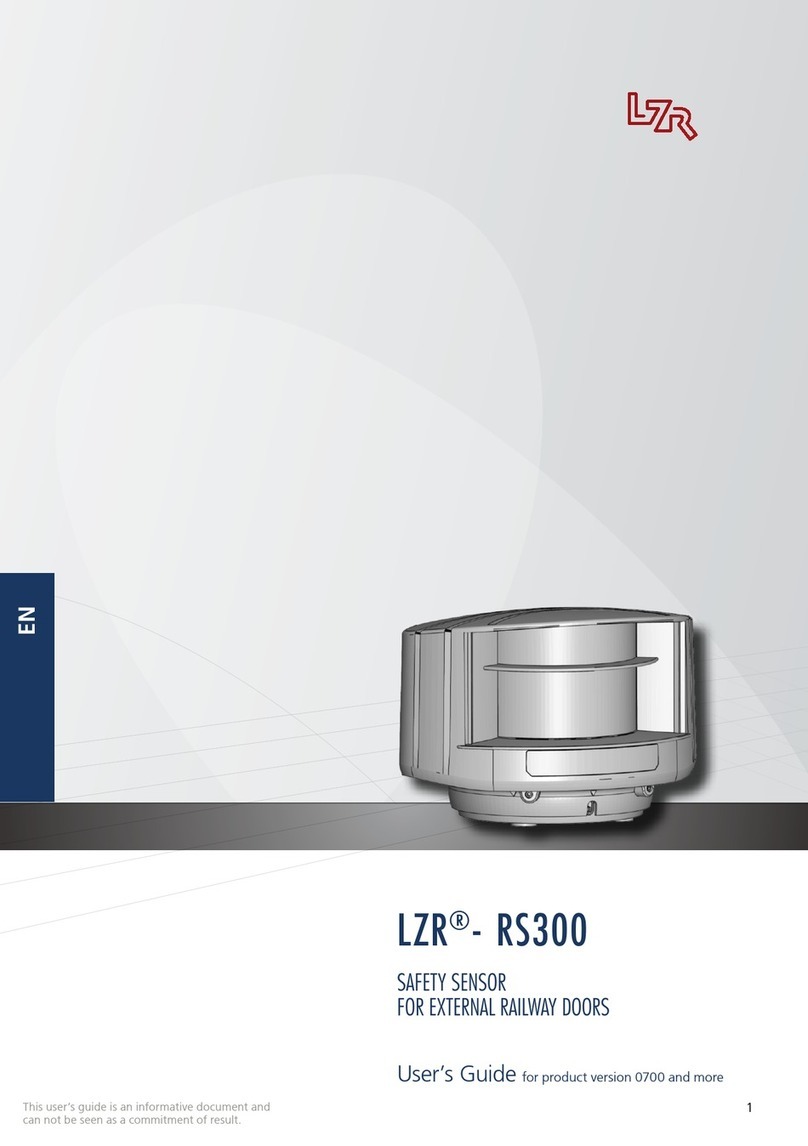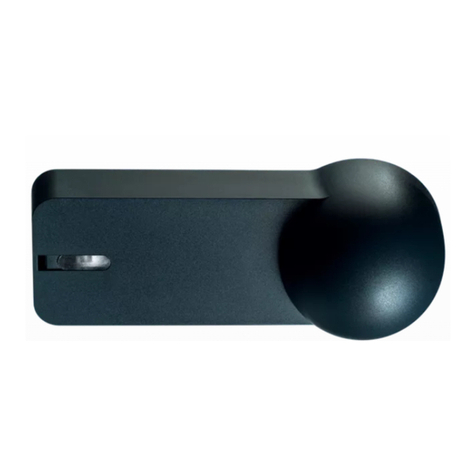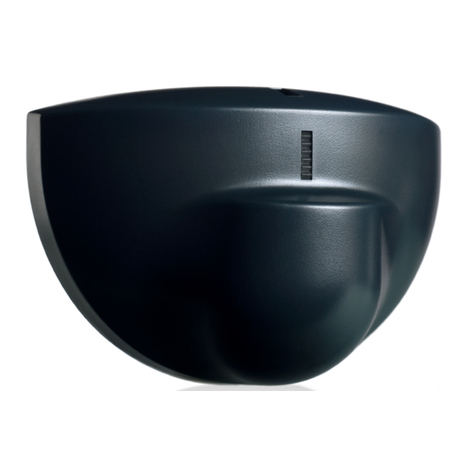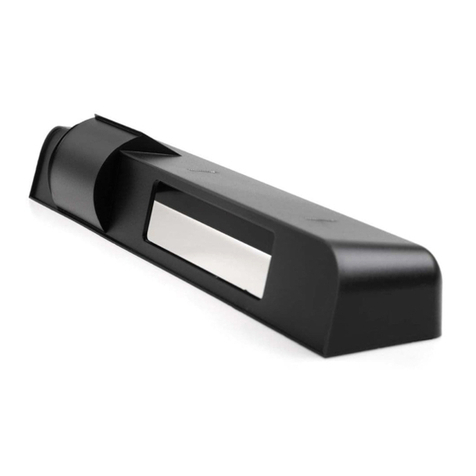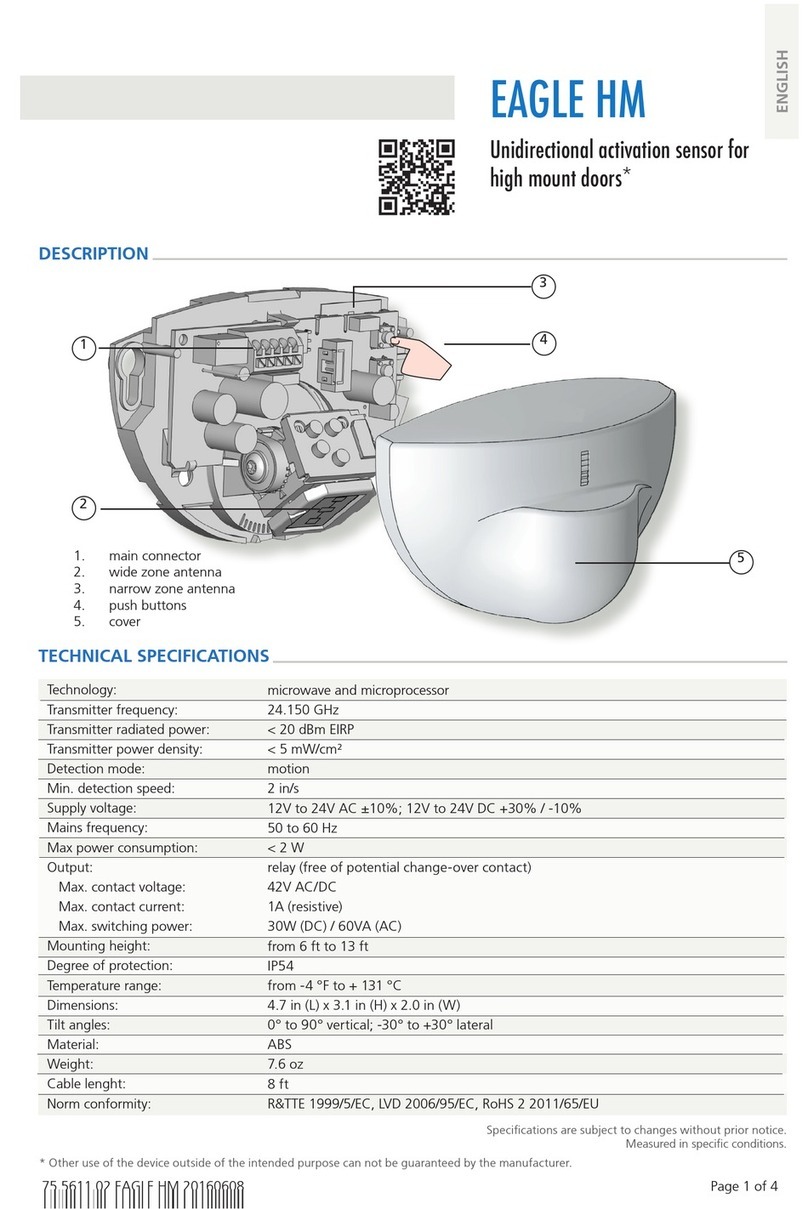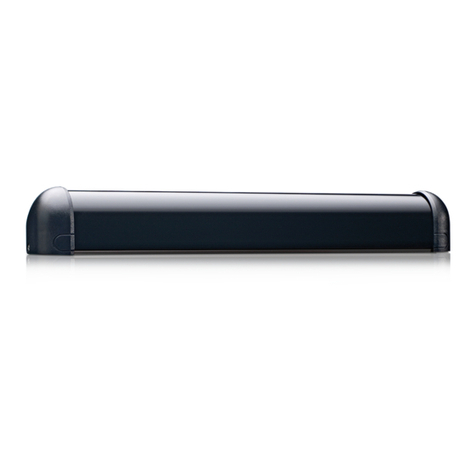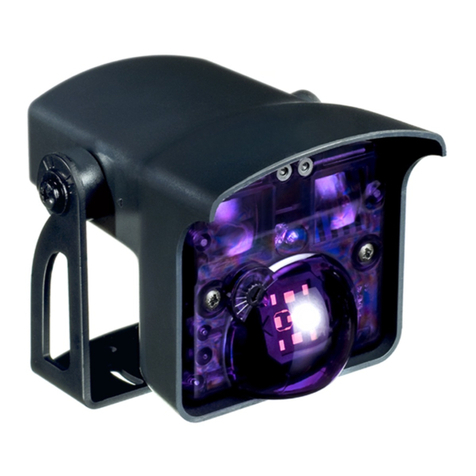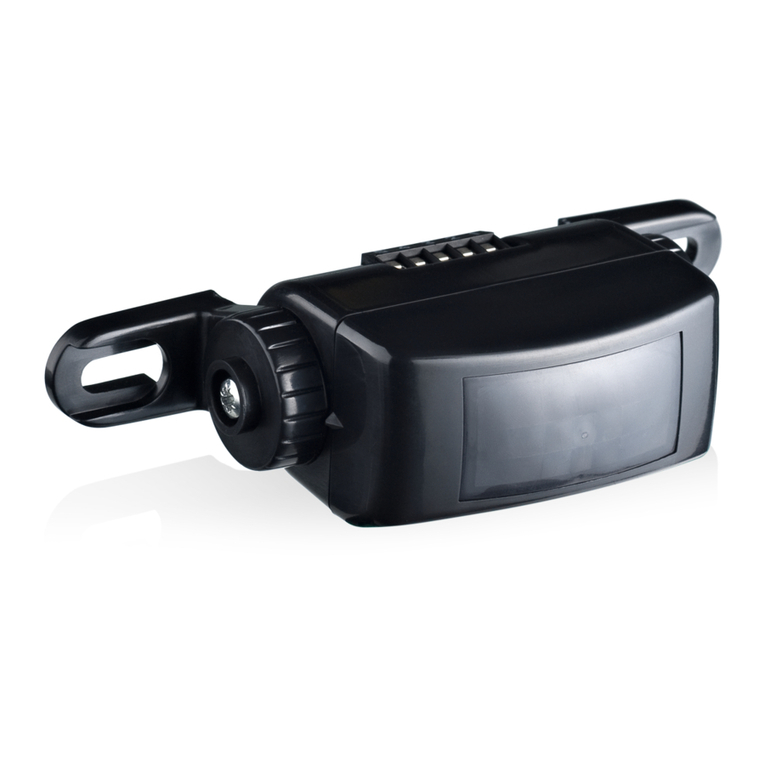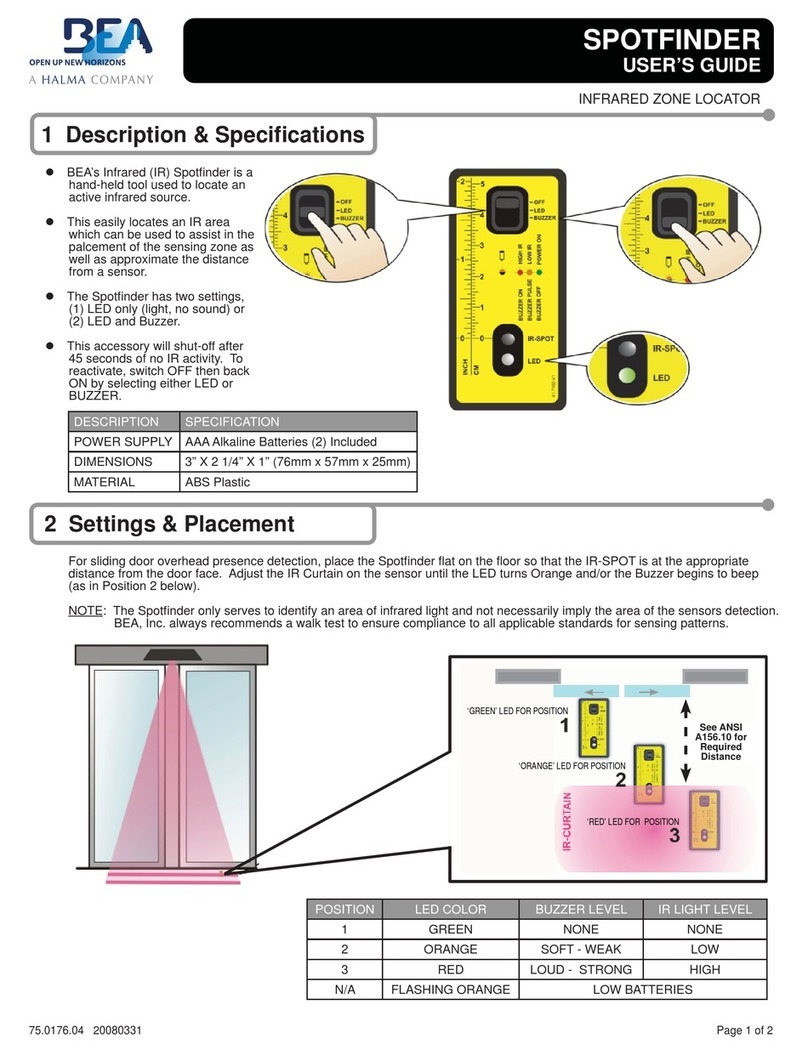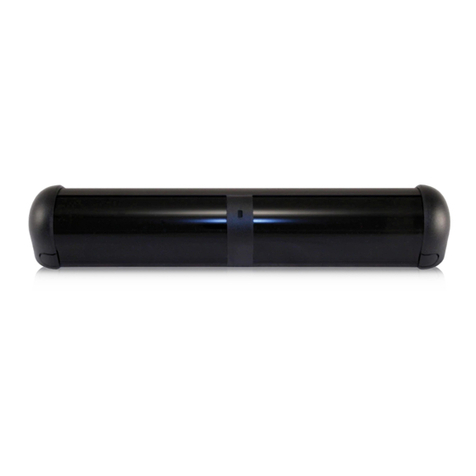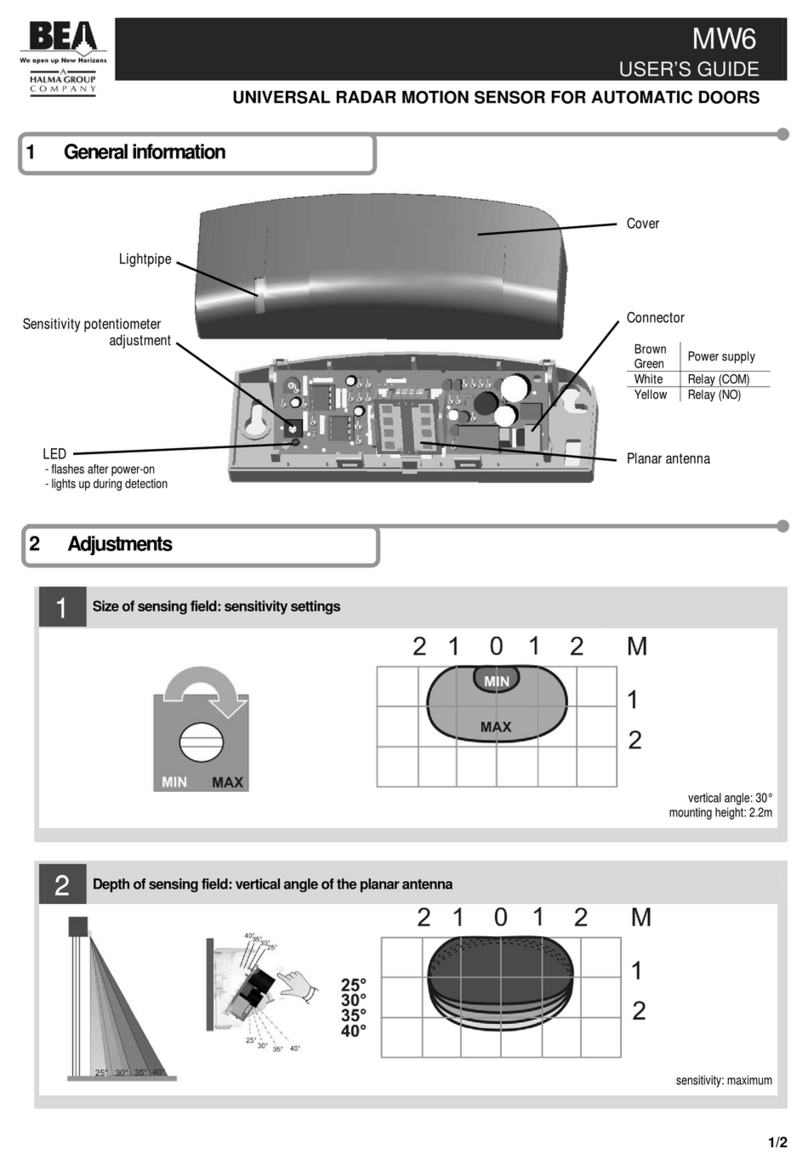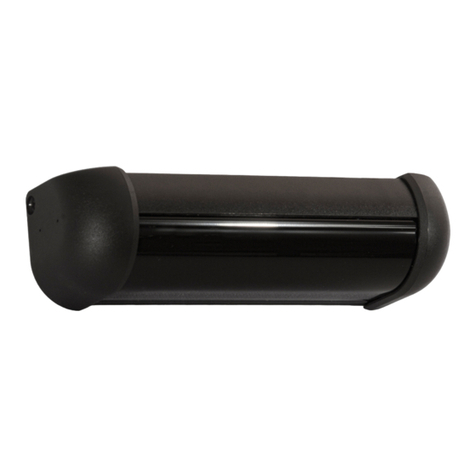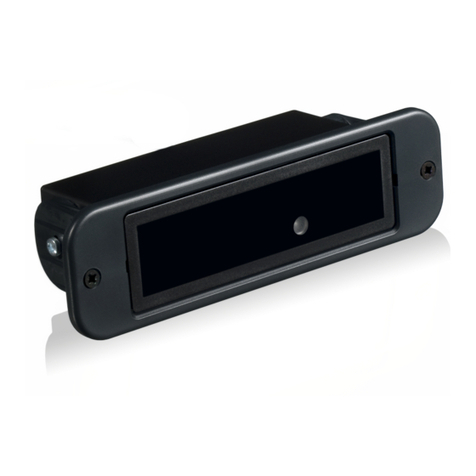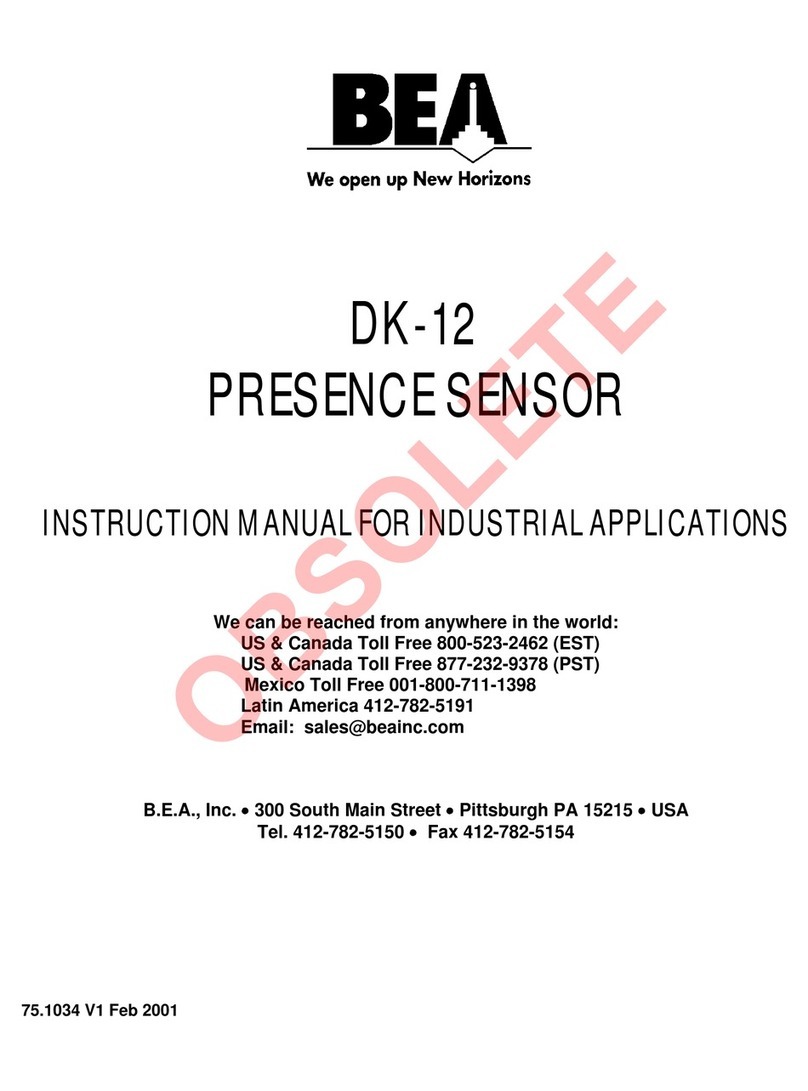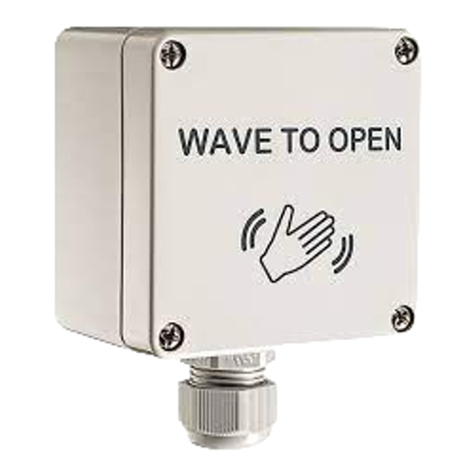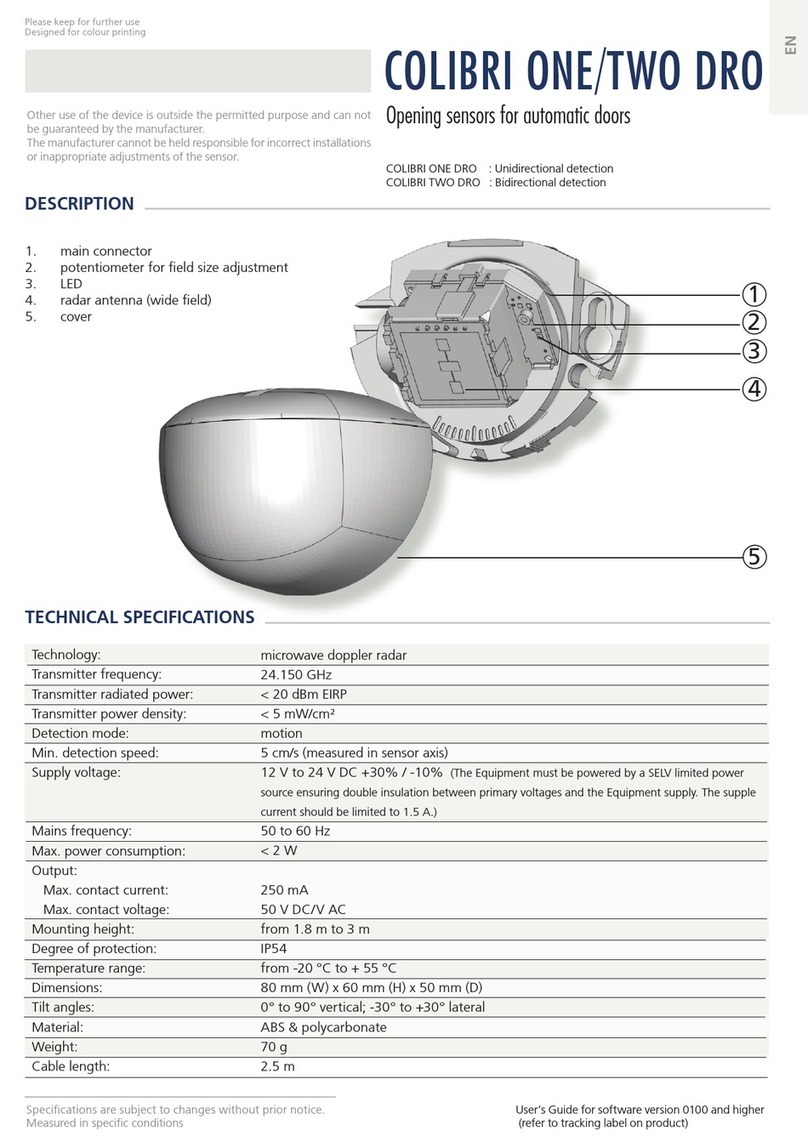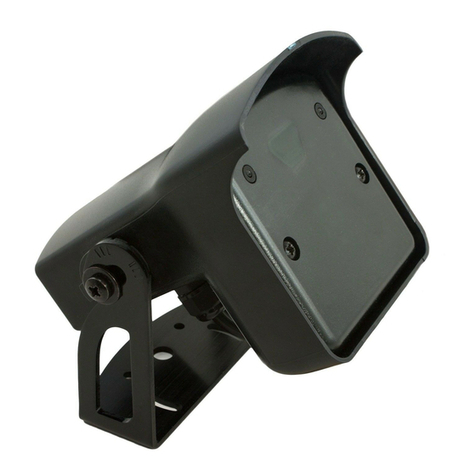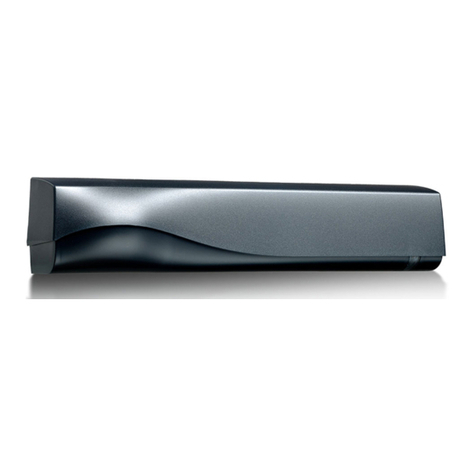
8
3
4
ON
1 2 3 4
ON
1 2 3 4
ON
OFF
4
1.
X
Custom Mode
Standard Mode
TEACH-IN PROCESS
DIP-SWITCH 1
Before launching a teach-in, make sure that:
-glass surfaces near the door are covered
- the door controller is set up first
- the detection field is free of snow buildups, heavy rain, snowfall, fog or other objects or people
- the laser window protection is removed.
1. To launch a teach-in, press the push button briefly. The LED starts to flash red-green quickly.
2. Wait until sensor flashes green quickly. Position yourself in front of the door and stretch out your arm in front
of you. Make an up and down movement in front of the moving edge level in order to mark the limit of the
detection zones. The LED flashes red while calculating the width of the door wings.
3. •Standard Mode*:The LED starts to flash red, then green slowly, next the red, no need to do anything during
this process ( Make sure you’re outside of the detection field ), wait until the LED is off, the teach-in is completed.
• Custom Mode:The LED starts to flash red, then green slowly, then move your hand to define the detection
field as your request, next LED flashes red. ( Make sure you’re outside of the detection field ), wait until the LED is
off, the teach-in is completed.
Make sure the setting of DIP 1 is correct.
Output from R1,
red LED
flashes
when there is a detection.
(Recommend Mode)
Output from R2,
green LED
flashes when there is a detection.
< 1 sec. 2. FIELD WIDTH 3. TEACH-IN
TEACH-IN
30s
30s
ORANGE OFF
After changing a DIP-switch, the orange LED flashes. A LONG push on the push
button confirms the settings.
GREEN
> 3 sec.
FACTORY VALUE
* The default mode is Standard Mode.
A
rectangle shape
can be traced in the detection area during the learning
process of 30 seconds.
A
custom shape
can be traced in the detection area during the learning
process of 30 seconds.
